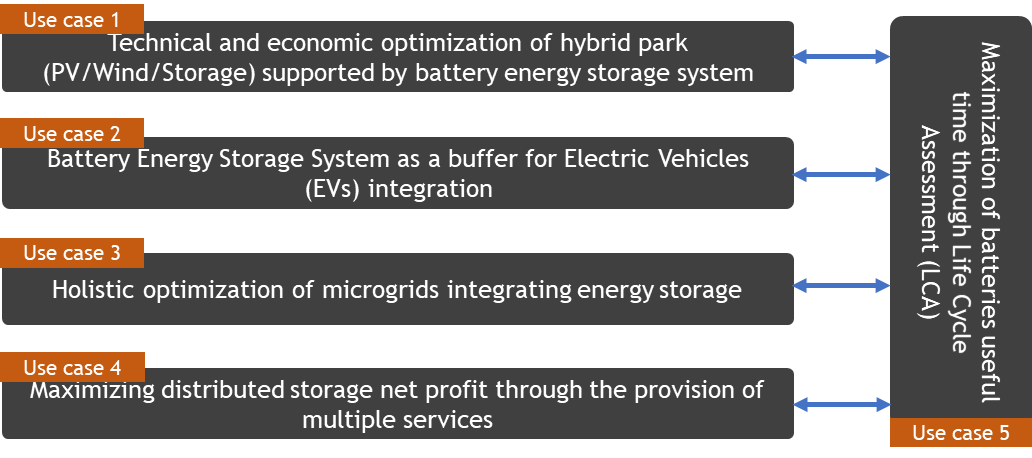| » Goals |
| The FLEXERGY project aims at developing an advanced and highly innovative management solution, enabled by artificial intelligence, suitable for managing battery-based energy storage assets, integrated with renewable energy sources or meant to be applied in micro grids. This platform will be developed according to the intrinsic features of this kind of systems, being suitable for adaptation to different scopes of integration. |
| |
| The specific goals of FLEXERGY aim to provide the management system with a relevant spectrum of features suitable for some of the application scopes of the energy storage systems, such as integration of renewables and micro grids, also considering the management of the useful lifecycle of the battery system. On the other hand, the project aims to develop a fully differentiated platform that allows the aggregation of functional applications in the same storage system, thus leveraging its added value. |
| |
| The proposed management system differs from the existing ones in the market, since it is designed to allow the aggregation of value by performing different functionalities, not only considering the storage asset, but also the application context. In this way, the management system is suitable to address either one source of renewable energy only or several other assets within a micro grid. In addition, the optimization of the charging and discharging periods of the battery system is defined considering the characteristics of the storage technology, recognizing the key factors of its performance, to maximize the useful life of the battery system and, in this way, the value of the storage system in a life-cycle perspective. |
| |
| |
| Use Cases |
| |
| For the FLEXERGY project, five use cases are identified, namely: |
• Technical and economic optimization of hybrid park (PV/Wind/Storage) supported by
Battery Energy Storage System (BESS)
• BESS as a buffer for Electric Vehicles (EVs) integration
• Holistic optimization of microgrids integrating BESS
• Maximizing distributed storage net profit through the provision of multiple services
• Maximization of BESS useful time through Life Cycle Assessment (LCA) |
| |
| The use cases are not independent from each other. The following figure depicts the interactions between use cases. |
| |
 |
|
| |
|
|